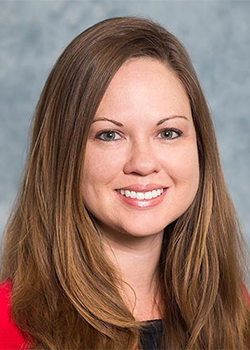
When the heart stops beating during sudden cardiac arrest, receiving cardiopulmonary resuscitation (CPR) from a bystander doubles the chance of survival.
But research from the Duke University School of Medicine, published today in the Journal of the American Heart Association, reveals a consistent reality: women are less likely than men to receive this life-saving intervention if they collapse in public.
The new study showed women were 14% less likely to receive bystander CPR and defibrillation than men. The Duke team analyzed data about more than 309,000 cases of cardiac arrest from 2013-2019, from 47 states and is one of the few studies that factored in the racial composition of the neighborhoods. Researchers found that rates were similar whether the neighborhood was predominantly white, Black, or Hispanic.
“This inequity of bystander CPR for women is staggering,” said Audrey Blewer, PhD, MPH, an assistant professor in the Department of Family Medicine and Community Health.
Blewer, whose grandfather was a fire chief, firefighter, and Emergency Medical Technician, is working to change this disparity.
Only 10% of people who suffer a cardiac arrest outside of a hospital survive.

“That’s what makes the results of this study especially sad. Having that shock to the chest and restarting the heart can significantly increase the likelihood a person lives,” Blewer said.
Answering questions like "How can we change the public messaging around CPR? How can we change the public perception around it?" could improve that outcome. According to a 2019 study, one of the reasons for the disparity is the fear that performing CPR on a woman in cardiac arrest will result in inappropriate touching or harm the victim.
Blewer, a cardiovascular care volunteer with the American Heart Association, is contributing to the education section of the 2025 CPR guidelines. The effort, aimed at reducing disparities, might lead to changes in the training curriculum.
Blewer is also a member of BIRCWH K12 Institutional Career Development Program, which provides support and funding for Duke faculty with research focused on women’s health. She’ll work to understand mechanisms that influence whether a bystander decides to perform CPR on a woman and use that information to develop interventions.
JOAN Creative, a woman-led company, is taking steps to address this as well. They created the “Womanikin,” a breast attachment that can go on any CPR mannequin used to train people. The company was inspired to create the attachment after reviewing research on the topic, including Blewer’s previous 2018 study on women being less likely to receive CPR in public spaces. “I think CPR training on a female half torso Manikin is definitely key to closing this gap,” she said.
Blewer has been studying resuscitation for years and was first introduced to the field by her grandfather. Blewer watched him battle cardiovascular disease.
“For most of his life, he had to take measures to improve his cardiovascular health. A little bit of that early exposure to cardiovascular disease and prevention impacted how I looked for positions after I got my master's in public health, ”she said.
Earlier studies from Blewer and colleagues have documented both gender and racial disparities in who receives CPR after a cardiac arrest that happens outside of the hospital.
In 2017, Monique Starks, MD, a cardiologist and associate professor in the Duke Department of Medicine, found that people who had a cardiac arrest in predominantly Black neighborhoods were less likely to receive bystander CPR and have poorer outcomes than those that had a cardiac arrest in predominantly white neighborhoods.
That got Blewer thinking about other disparities, and in 2020 Blewer published a study that showed that people who had cardiac arrest in predominantly Hispanic neighborhoods were less likely to receive CPR than those in predominantly white neighborhoods. A later study published in the New England Journal of Medicine in 2022, again confirmed these differences.
While Blewer and colleagues are still conducting additional research to understand and fix these disparities, Blewer said that for now, there’s a way everyone can help save a life.
“For the public facing community, they just need to know three simple steps, ‘call, push, shock.’ Which is calling 911, pushing hard and fast in the center of the chest and using a defibrillator if it's around. That's something anyone can do without needing a certification,” she said.